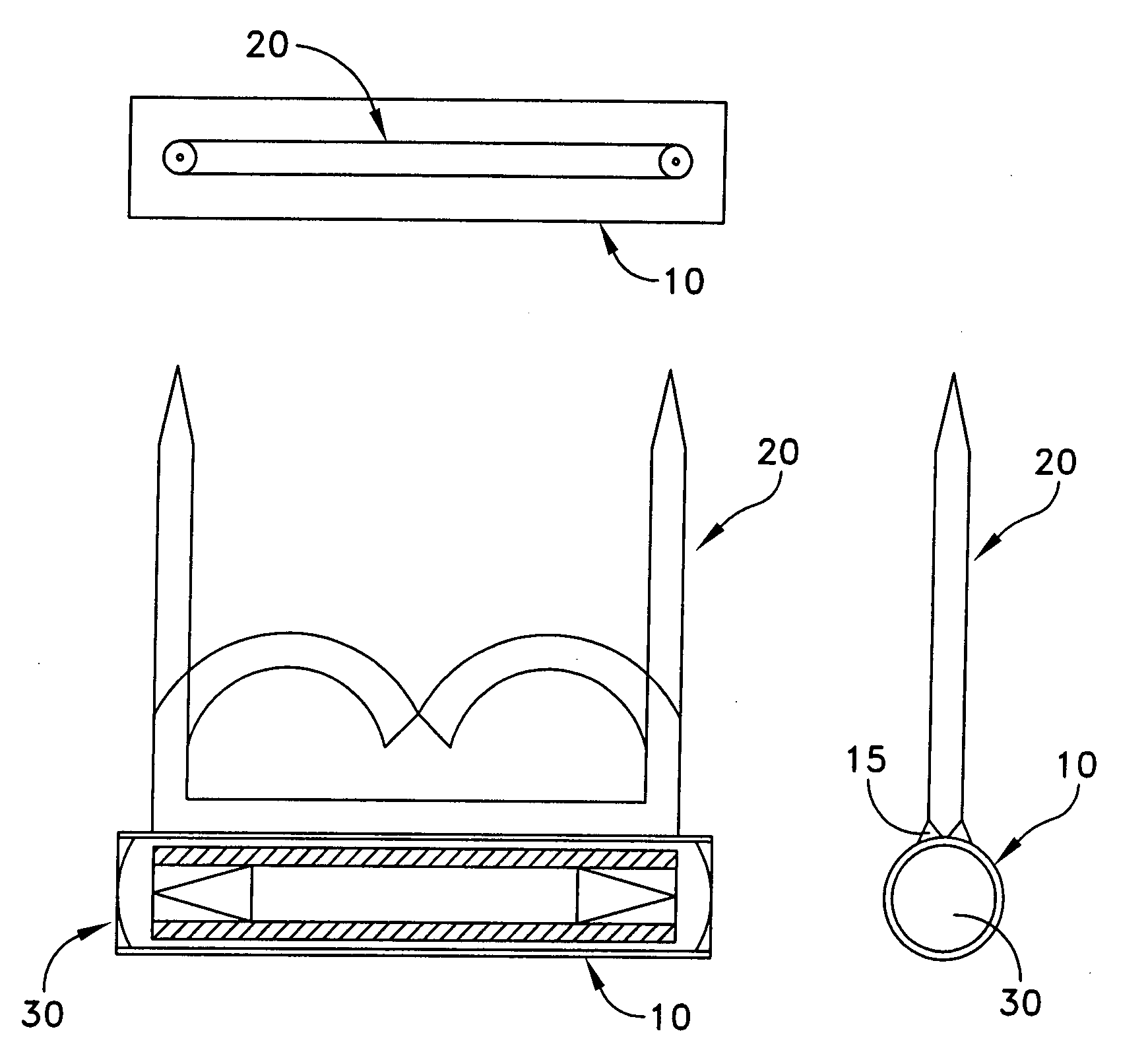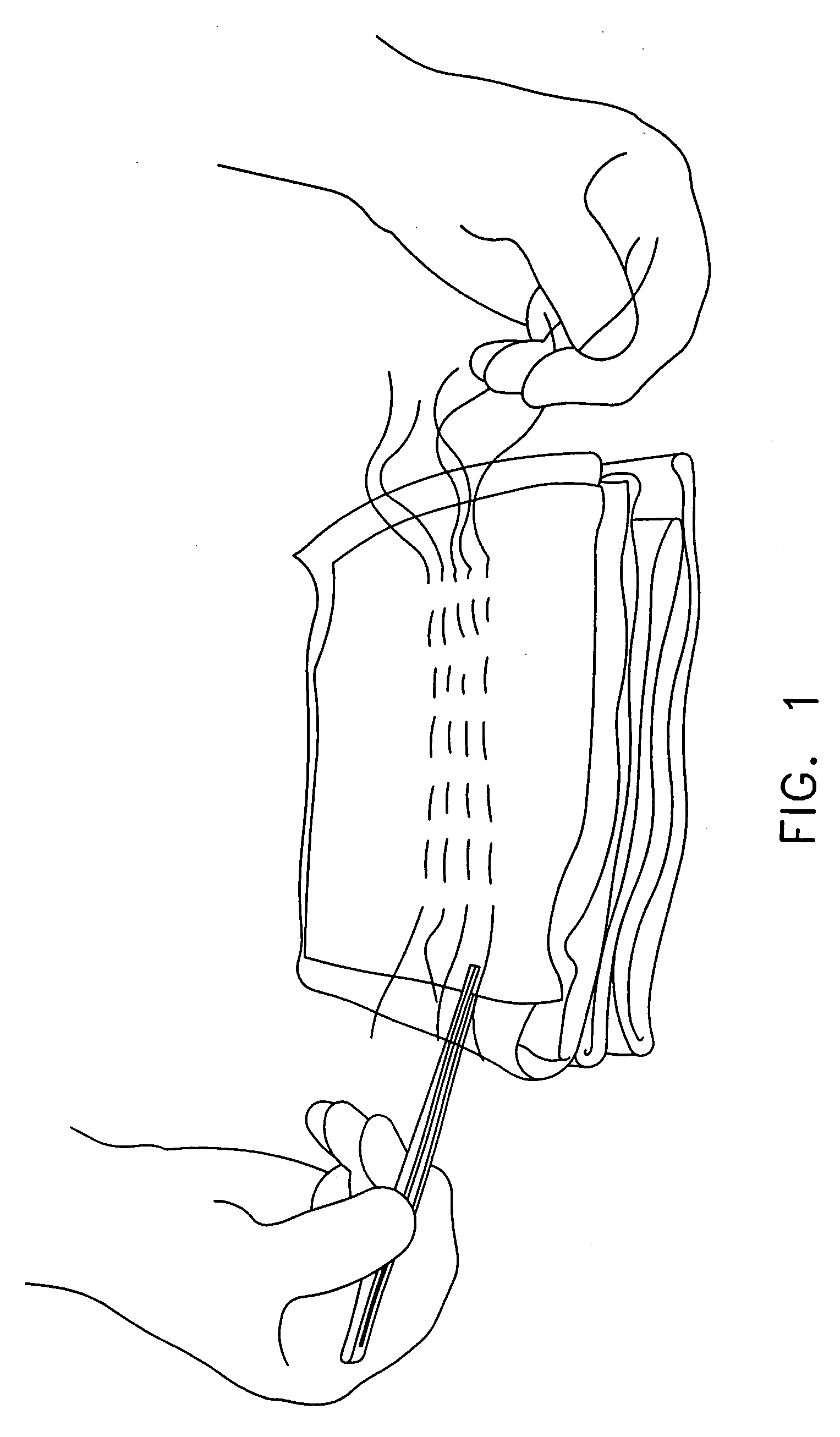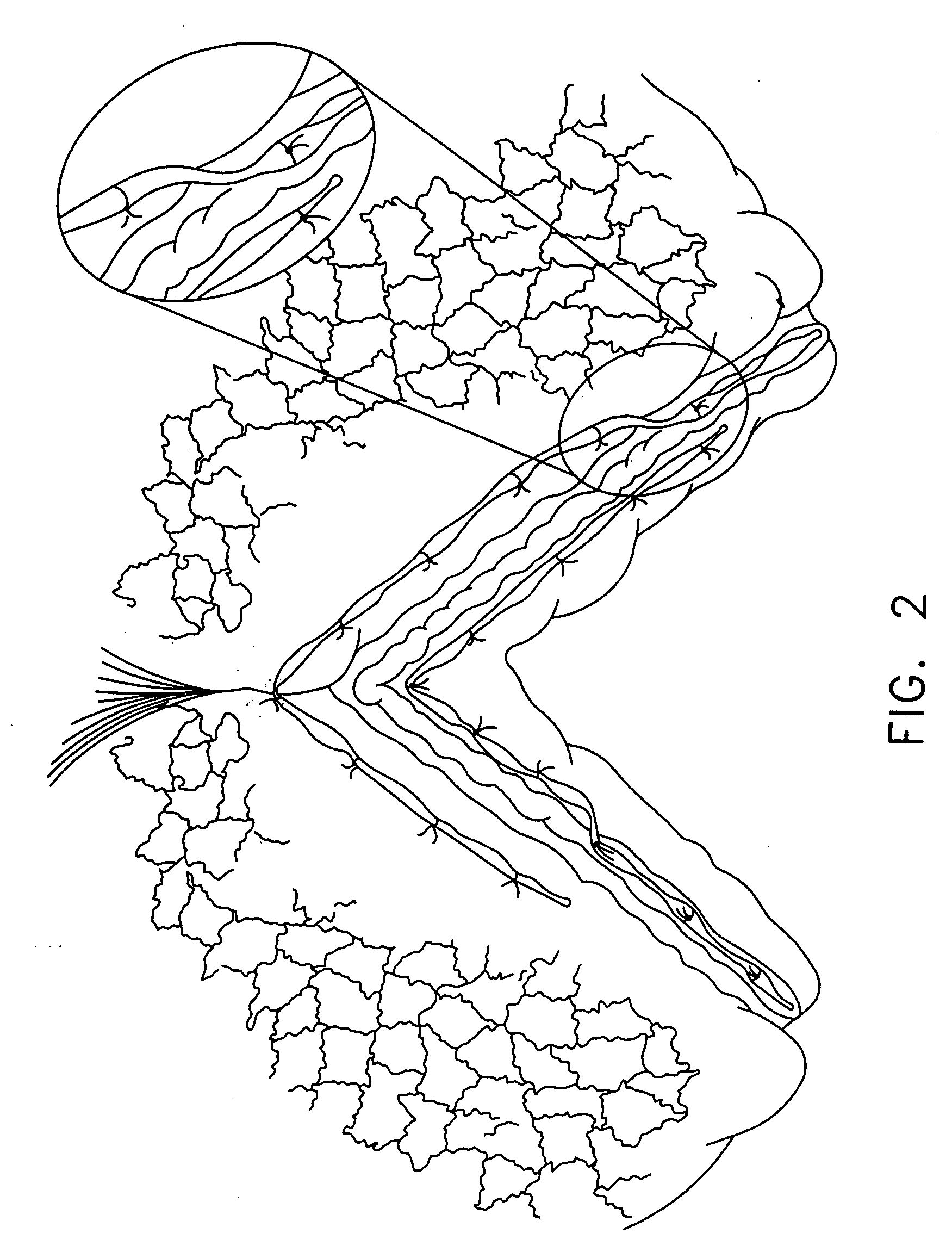Radioactive therapeutic apparatus
a radioactive therapy and brachytherapy technology, applied in radiation therapy, surgery staples, therapy, etc., can solve the problems of poor candidates for lobectomy, and increased risk of local recurrence, so as to further reduce pulmonary function and improve the effect of external beam radiation therapy
- Summary
- Abstract
- Description
- Claims
- Application Information
AI Technical Summary
Benefits of technology
Problems solved by technology
Method used
Image
Examples
Embodiment Construction
[0038]An objective of the present invention is to develop an improved delivery system based upon the incorporation of a radioactive seed into fastening means, preferably into a surgical staple. More particularly the disclosed system is an improved brachytherapy delivery system for treatment of, inter alia, lung cancer based upon the incorporation of radioactive 125Iodine seeds into surgical staples used in lung resection. For patients with compromised cardiopulmonary status, the inclusion of brachytherapy with sublobular resection has shown a significant improvement in therapeutic outcome over sublobular resection alone. This present technique facilitates the delivery of this therapy. Furthermore, the techniques described herein may also be used in other medical procedures. Moreover, the techniques of the present invention may be used in applying other radioactive sources than the specific ones disclosed herein.
[0039]Brachytherapy has the obvious advantage of maximally irradiating t...
PUM
 Login to View More
Login to View More Abstract
Description
Claims
Application Information
 Login to View More
Login to View More - R&D
- Intellectual Property
- Life Sciences
- Materials
- Tech Scout
- Unparalleled Data Quality
- Higher Quality Content
- 60% Fewer Hallucinations
Browse by: Latest US Patents, China's latest patents, Technical Efficacy Thesaurus, Application Domain, Technology Topic, Popular Technical Reports.
© 2025 PatSnap. All rights reserved.Legal|Privacy policy|Modern Slavery Act Transparency Statement|Sitemap|About US| Contact US: help@patsnap.com



